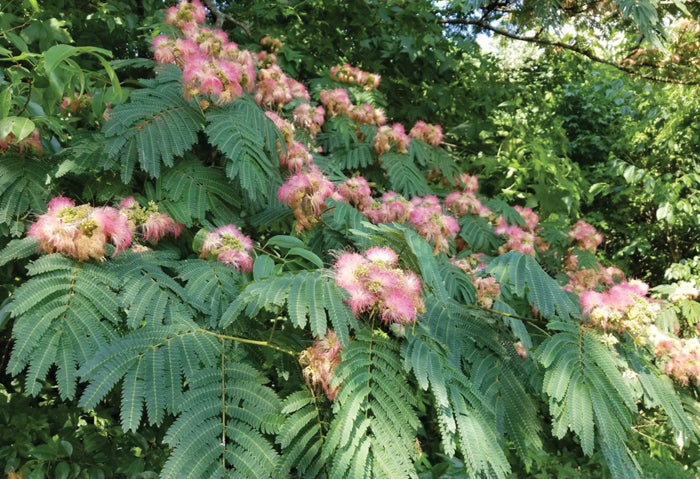Those fluffy pink blooms dotting the countryside
Published 12:00 am Sunday, June 24, 2018

- Mimosas have adapted to our climate and grow quickly. Photo by Darrell Blackwelder
One cannot help noticing pink, puffy blooms on small under-story trees dotting the county, as mimosa trees have been glowing for a couple of weeks. Introduction of this tree to the United States, native to southern Asia, has been traced back to 1745.
Mimosas trees (Albizia julibrissin) are relatively small, reaching a height of 25-35 feet, and can be found growing almost anywhere, from abandoned parking lots to roadside embankments.
These trees are legumes, adapting to our climate and growing quickly. A way to identify the tree after bloom is by its bean-like pods, similar to those on redbud trees.
Unfortunately, mimosa trees have a very short life span because of a fatal fungal disease. Mature trees never live more than 25 years before succumbing. This disease has practically eradicated mimosas from many areas in the South. The fungus is present in the soil and enters the tree through its root system. Once the disease becomes established in the soil, there is little that can be done to save the trees. The fungus may be transmitted in seeds collected from diseased trees and there is no practical control for this disease.
Regrettably, not only does this unique tree have a short lifespan, it has also been deemed an invasive species (sorry, Clyde) by the NC Forest Service because of its threat to natural areas, due to its prolific production of seeds that can remain viable for years.
The threat is so severe, some municipalities in our state have passed ordinances outlawing new plantings of this species.
Go to http://ncforestservice.gov/publications/Forestry%20Leaflets/IS13.pdf for more detailed information about mimosa trees.


